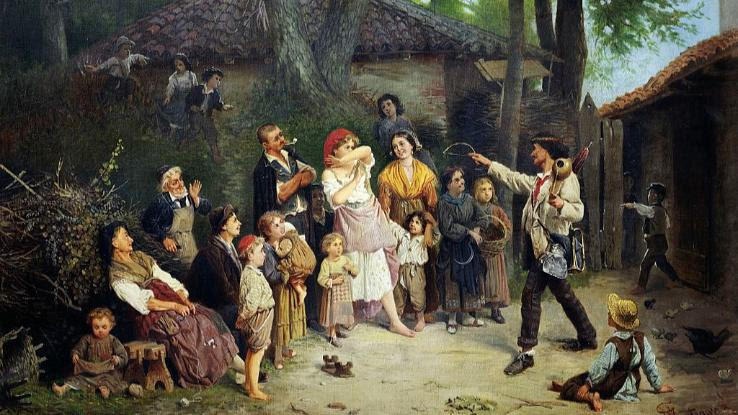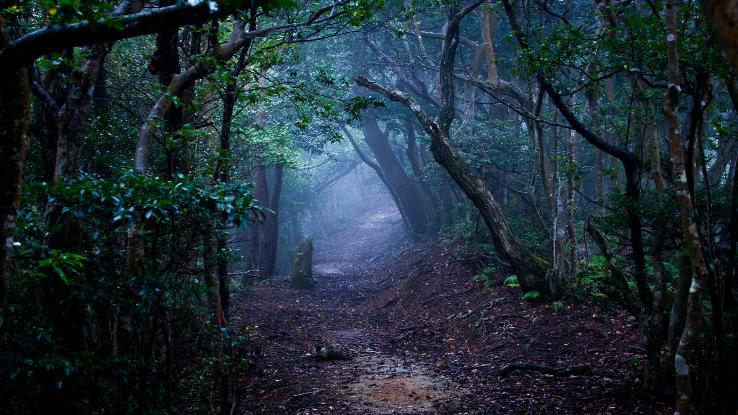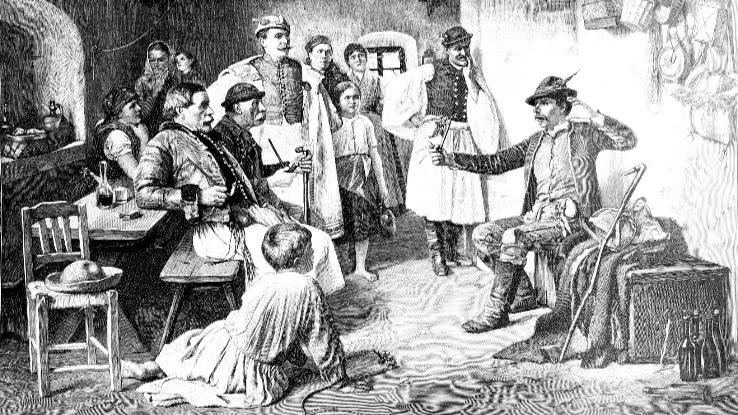Folklore Flourishes: How Fairytale Openers Reveal Our Global Cultural Values

“Once upon a time…” Perhaps no other words in the English language have the power to evoke such an immediate sense of excitement and mystery. They’re the stuff of children’s bedtimes around the country and the heralds of eventual happily-ever-afters — but “Once upon a time” isn’t necessarily common around the world. While most fairytales have standard openings, they vary widely from region to region across the globe, illuminating cultural values and unique storytelling principles along the way.
Join us as we explore lands far, far away through their fairytale openers — and learn how the inherent magic of folktales is one of those notions that people, wherever they might be from, never really outgrow.
The Inherent Wisdom of the Fairytale

As author Madeleine L’Engle once put it, “Often the only way to look clearly at this extraordinary universe is through fantasy, fairy tale, myth.” As delightful as fairytales, folktales and other forms of mythology might be, their significance goes far beyond mere entertainment.
In the book Hero With a Thousand Faces, Joseph Campbell argues that every story ever told is actually the same story in a different form. Campbell continues, outlining the elements of stories in his “hero’s journey” template, which aligns surprisingly well with everything from ancient folktales to modern films.
Fairytales, it could be argued, contain some of life’s deepest truths — just wrapped up in a bit of symbolism to keep things interesting and capture the imaginations of children and adults alike. Whether they reflect our need to overcome inner struggles or to journey into new chapters of our lives, many stories contain a unique element of inspiration. But to be open to it, you must first be in the right frame of mind, and there’s a key way to open that mental door.
The Magic of Traveling Into the Past…

Fairytales begin with what’s known as a “common beginning,” such as “once upon a time.” A common beginning is just that — a single phrase that almost always signals the start of a fairytale, fable or myth. Common beginnings are introductions that have been used to the point that they’re no longer novel; instead, they become a conventional or even essential way to signal a reader is about to encounter an enchanting short story.
In the case of “once upon a time,” not only has it been around for centuries, but its sentiment is one that’s also relatively common around the world — though it varies from culture to culture. For instance, in Irish folklore, you might hear a story begin with “‘Before you were born, and after the sun first shone…” while a Romani storyteller might say “There was once a time like no other time.” In Korea, you might even hear “In the old days, back when tigers smoked…”
Regardless of the cultural flourishes, this type of common beginning has a way of instantly transporting the reader to an ancient time full of mystery and magic. By placing the story in a bygone era, the opening immediately removes many of the limitations of modern-day thinking and helps us suspend our disbelief.
While we all have a basic idea of history, there’s also a part of our minds that understands how completely unfathomable many elements of mythical tales really are. But the past is a place full of a million untold stories, a place where it tends to be easier to believe that anything was possible.
…Or Into “A Land Far Away”

The historical or imaginary period that “Once upon a time” references isn’t the only element of a fairytale that transports us somewhere else. Often, the same idea is reinforced by what comes next: the story’s physical setting. By allowing a story to unfold “in a land far away,” readers become even less likely to try to interpret it through the lens of their own everyday experiences. While the truths hidden in fairytales are somewhat universal, they’re also the kind of things that day-to-day reality distracts us from ever looking close enough at to notice.
A Czech or Polish storyteller might direct your imagination with “beyond seven mountains, beyond seven rivers,” while a Slovak story might be set “where the water was being strewn and the sand poured.” Other common openings hint more obviously at the fact that every good fairytale plays out in the part of our minds that isn’t bound by limits — or that’s only in our minds. In the South Asian Tamil language, a story might be set “in that only place.”
Other cultures use descriptions of a story’s setting to help readers imagine for themselves where this kind of place might be and what it might feel like. An old Turkish storytelling device involves using a series of bizarre situations to set up the tale’s world. For instance, a storyteller might set the scene for their tale with something like, “In the long-distant days of yore, when fleas were barbers and camels were town criers…” to give listeners an idea of just how different things were.
Aside from setting the time and place for the tale, another common phrase is often used in multiple cultures. German, Hungarian, Kurdish and Lithuanian fairytales are only a few that often feature the phrase, “There was, and there was not.” It’s a phrase without a clear meaning — it almost sounds as though the world wasn’t fully formed yet — and, still, listeners all seem to understand that it indicates a sense of magic and mystery and inspires curiosity about what unfolds next.
Fairytale Beginnings Create a Connection to the Familiar

Other fairytales take a slightly different approach to emphasize the truth contained in a certain story. While such tales are still often set long ago or in an exotic place, the storyteller somehow connects themselves to the story.
For instance, in Women Who Run With the Wolves, author Clarissa Pinkola Estes relays a device commonly used in the telling of a story about Bluebeard, an evil conjurer whose numerous wives all disappeared under suspicious circumstances. Estes recounts that, often, Hungarian storytellers include in their folktales “an anecdote about someone who knew someone who knew someone who had seen the grisly proof of Bluebeard’s demise.”
Similarly, Russian storytellers tend to end stories by suddenly inserting themselves into the plot, perhaps by saying something like, “I was at the wedding. I drank mead and wine there; it ran down my mustache but didn’t go into my mouth!” Other cultures take the approach of presenting a tale as an oral history that’s meant to be passed along. In Chile, folktales often include language like “listen to tell it and tell it to teach it,” while in Telugu stories, a common beginning is “Having been said and said and said…”
The effect of this storytelling device makes the tale even more magical by hinting to the readers that what they’ve just heard is not the stuff of mere fantasy — and also that they’re being entrusted with an important lesson they need to heed and share. While we may not live in a world where dragons torch villages or animals speak our words, the underlying truths hidden in these stories are very much alive and well. By assuring the listener that there’s something in the tale that’s of importance, their sense of mystery and curiosity is only enhanced — as is the possibility they’ll pass it on, ensuring the story lives happily ever after among new generations.





